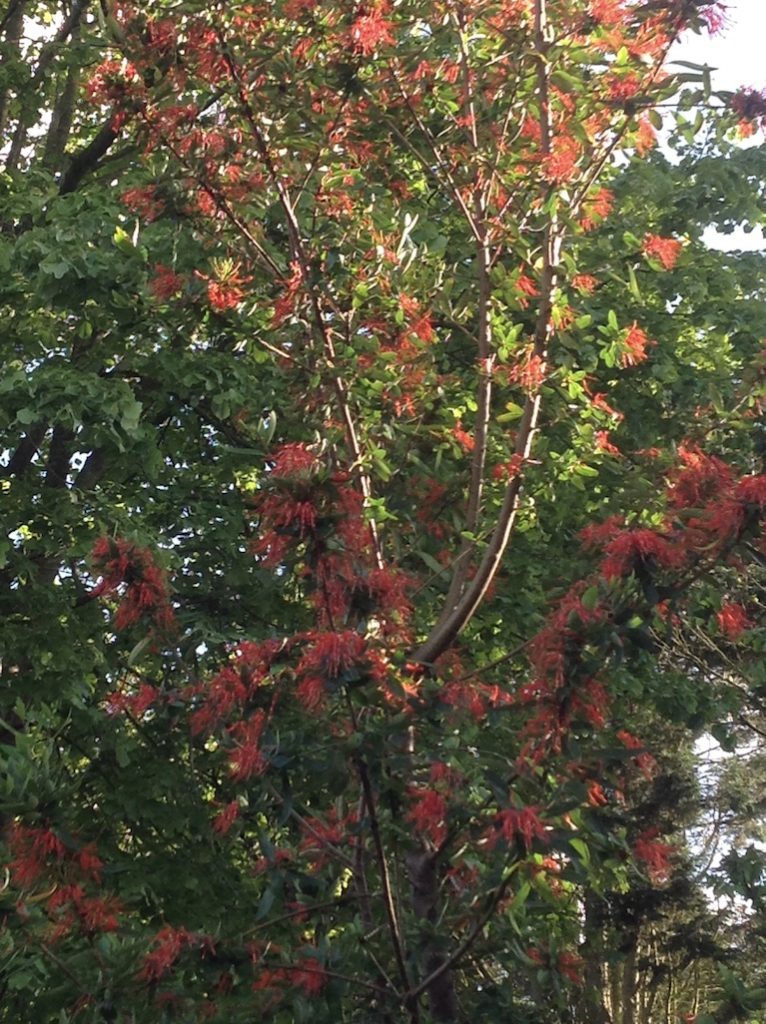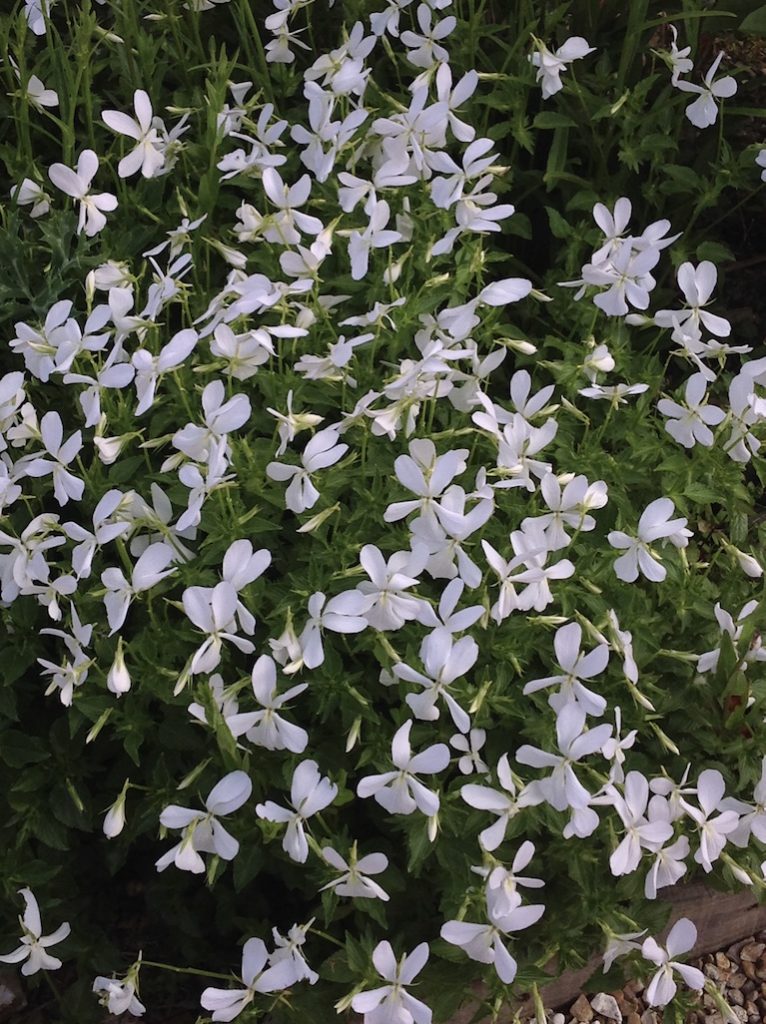When it comes to gardening we’ve all had our success and failures. What’s good to know is that even the experts have theirs. Here’s Alison Agnew with hers.
Follies and Failures
I’ve been making entries into my garden’s Excel file and am shocked by the number of deaths and disasters that I’ve recorded over the last 15 years. Excel file? Yes, I do record every plant I introduce, its major characteristics, where I got it from, where it is in the garden and whether it has thrived or died. And, yes, I am a nerd. But it is so useful – especially as the species count is now about 1000 and my memory is becoming seriously unreliable.
Follies
I grew up in West Penwith but lived until retirement ‘up country’ – as far ‘up’ as North Yorkshire for quite a while. Returning to Cornwall and starting a new garden on the Roseland was so exciting – all the wonderful exotics I could grow!
I rushed about gathering Proteas, Aeoniums, Aizooaceae succulents, Lapagerias, Echeverias, Coprosmias, Carpentaria, Tibouchina and many more favourites that I could grow ‘down West’. The soil here is poor but that should have been OK for most of these desirables. I was punished for my chutzpah. The first winter after planting was unusually cold (we even had use of our Yorkshire sledges) and I lost nearly all of that first wave of foolish planting.
I pulled back on my expectations then but continue to challenge the gods from time to time. I’ve been tempted again with South African proteas. Protea cynara , the King Protea, grows well in a cousin’s garden in Falmouth but has died (twice) in mine even when planted on a sheltered, well-drained bank – and only after a tantalising couple of years growing. I did a bit better with a Leucodendron – Safari Sunset was a brilliant flaming addition to my ‘Mediterranean’ bank for 4 years but succumbed to a wet winter. The lovely silver tree Leucodendron argenteum that grows in the Minack Theatre gardens, died in its very first winter.


I’ve given up on South African Proteas – the garden is just 3/4 of a mile from the coast but I need to be even closer for these lovelies. I was more hopeful for Echiums – there are Echium pininana all over the Roseland but of course I wanted the shrubby species, Echium fastuosum (candicans), and the lovely pink one with a silver rosette of leaves, Echium wildpretii. Both of these are more tender – or perhaps less wet tolerant – and both failed. Echium fastuosum gave me hope- grew happily for three years into a lovely silver grey dome and then died (out of spite) just before it was going to flower. Echium wildpretii turned its toes up straight away.


Winter wet, rather than cold, is probably our greatest enemy in Cornwall. I recall that I’ve lost plants in Cornwall that thrived in my well-drained soil in North Yorkshire.
But I continue to plant ‘try it on’ plants because several have established well here. Their success can be puzzling but brings a great sense of triumph. For example, I have several members of the mallow family Malvaceae. One is from the South African coast; Anisodontea capensis grows vigorously, propagates easily, and flowers for twelve months of the year. Another is Phymosia umbellata – a tropical evergreen shrub from Mexico! I have to cut it down hard in the spring to keep it tidy and it flowers from July until midwinter. I first planted it in a super warm and sheltered place but it now has offspring in much tougher locations. Sphaeralcea ambigua is yet another member of this family. It is short-lived like many mallows (3-5 years) but seems happy enough on our soggy soils despite its origins in North American deserts! This seems especially odd since common old Lavatera rapidly succumb to winter root rot here!



Failures : far too many – here are just a few of them
It’s easy to accept failure when we introduce plants ‘on the edge’ of hardiness, but what really drives me crazy is the death of perfectly tough old plants – often after growing happily for several years. I haven’t suffered this in other gardens so we’ve come to refer to it as Sudden Death Syndrome.
The worst impact is where a plant is in a critical location, for example -in a whole hedge of yews (Taxus baccata), just the odd one dies on me! It has been growing for over ten years and looking absolutely normal but over one or two seasons goes brown and dies leaving a patchy hole. It could be Phytophthora root rot infection but it seems odd that it impacts only occasional plants within a large hedge. Unfortunately Phytophthora is hard to diagnose – I will send samples of the next one to the RHS.

This Magnolia loebneri Leonard Messel was placed alone to show off its delicate flowers in spring against a dark hedge. It was in full flower in March and dead as a dodo by June!

These are some of the inexplicable deaths but post mortems on others have revealed disease. My Embothrium coccineum definitely succumbed to honey fungus although Burncoose Nursery states that it is a resistant species. It was replaced with Acacia verticillata which is on the RHS ‘rarely affected’ list. It grew well for 5 years and then died. In the same location a Calycanthus similarly thrived and then died. Perhaps it was honey fungus in all cases but I only found the mycelium in the trunk of the Embothrium. Honey fungus is a blanket name for several species of Armillaria fungus that are more or less aggressive pathogens. Every garden on the Roseland probably has honey fungus but I believed that mine was a fairly benign one because I have many happy plants on the ‘top host’ list. Needless to say, I have given up on woody plants in this location.


Fungal and bacterial diseases are more of a problem in warm wet Cornwall than elsewhere. My 20+ year old Magnolia grandiflora developed spotty leaves followed by leaf drop over several years until they looked so wretched that I removed them. I have just given up on a Chinese Hawthorn, Rhaphiolepis umbellata which also developed spots and dropped its leaves. I am in mourning – it used to lift my heart at a turn in the path at any time of the year.

Mea culpa
All the other reasons for failure are entirely mine.
Competition from thugs:
This is my worst failure – letting precious plants get overwhelmed by more vigorous ones. I brought this red variety of Primula florindae with me from Yorkshire and it loved my pond border, seeding itself about until I introduced some water cannas and a rampant Persicaria. I didn’t notice it was disappearing until too late – even though a similar Primula –P. bulleyana was holding its own.


Viola cornuta Victoria’s Blush disappeared under a snowstorm of V. cornuta Alba. I assumed they would have the same vigour but the blushing Victoria is a lady that doesn’t set seed.


Failure to water young plants:
A more occasional failing but an unforgivable one. I searched for years to find a plant of Tilia henryana – finally getting one from Pan Global Plants (a really interesting nursery in Gloucestershire). I planted it in the root zone of some large Monterey pine – a tricky location but I promised myself that I’d look after it. A dry summer, (and a busy one) did for it – just after I took this photograph of its amazing spring growth.

Failure to protect against rabbits and deer:
I’ve lost hollies to rabbits and more recently a lovely young (and expensive) evergreen Magnolia to bark-stripping by deer. We don’t have easy access for deer so I had failed to cage the young plant against an occasional invasion.
Other common causes of plant failure:
I don’t put my hand up to these but they are common faults.
Planting the right plant in the wrong place: it’s a good idea to look up where a plant comes from, both climate and soil type before buying. Wikipedia can be remarkably good for this information, the RHS site is OK and the Burncoose Nursery website is excellent for shrubs and trees.
Mulching:
Mulching with compost, wood chip, grass cuttings etc is hugely beneficial for soil conditioning and weed suppression. Most herbaceous plants don’t suffer from burial in mulch as long as it’s done when dormant. Paeonies don’t like their crowns deeply covered – they’ll live but sulk. Many shrubs and young trees really don’t appreciate the junction between root and stem being buried – wet and soil promote rotting and can cause rapid death.
Mechanical damage:
Mechanical damage is primarily a problem for woody plants. Failure to stake young trees to prevent rocking at the base and root damage. Failure to check that the ties themselves are not causing damage – both are common faults. I once lost a shrub because I forgot to take off the plastic plant label which eventually strangled it. In Cornwall we should cut back roses before the winter winds can rock them.
The other cause of damage to woody stems is usually caused by gung-ho users (usually male) of strimmers and lawn mowers!

